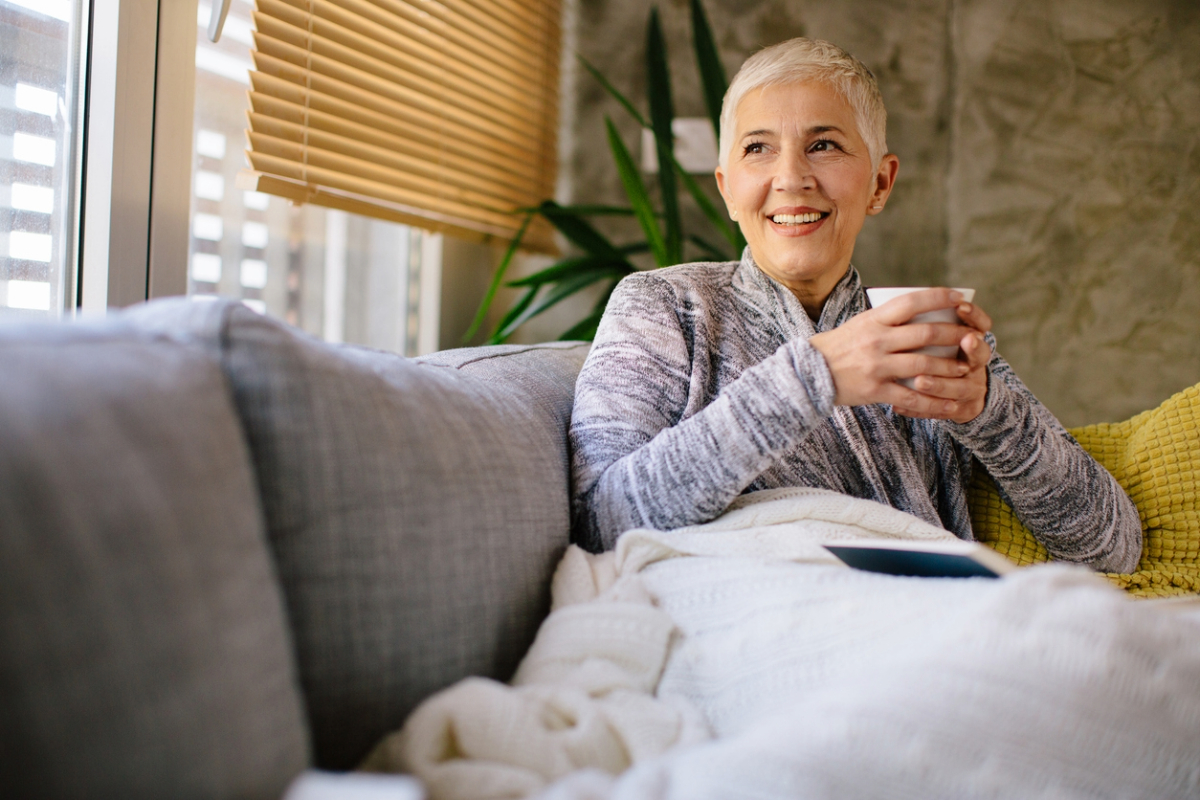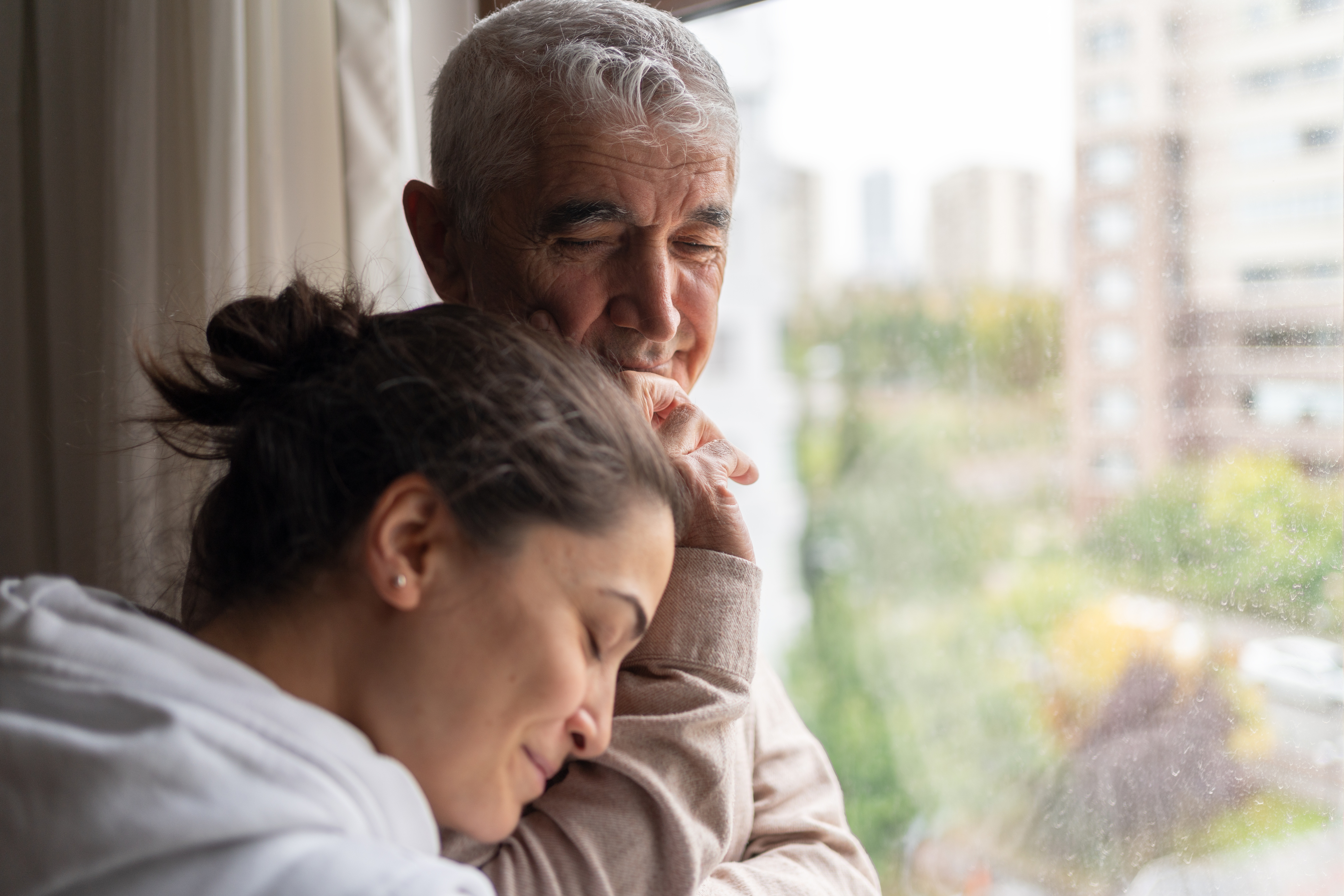
Learn helpful tips, room by room, on how to modify your home to make it safe and friendly for those living with dementia.
As a caregiver for someone with Alzheimer’s or other related dementias, you know the challenges. One such challenge may be adapting your living space to better accommodate your loved one’s changing needs. This month, we thought we would look around the house, room by room, and see how it can be modified to make it more dementia friendly. When your home incorporates the elements of dementia-friendly design, your loved one’s risk of falling is reduced, his memory is aided, and he has more freedom to use his own abilities. A good design helps your loved one thrive.
Before going through each room, we will first review some elements of good dementia design.
Good Design Elements Include Lighting, and Color and Contrast
Good lighting and contrasting colors are important elements of dementia-friendly design. David McNair of the Dementia Centre describes four elements of good lighting:
- To compensate for aging and dementia-affected eyes, establish two times the recommended level of lighting in your home;
- Use daylight as much as possible, keeping curtains open throughout the day;
- Use “home-style” lighting, such as table lamps or wall-mounted lights, vs. a large overhead light that might make one feel like they are in an institution and
- Lighting should match the cycle of natural day to night. This helps circadian rhythm and will help maintain a quality sleep pattern.
Color and contrast are also important for us to see things better. For instance, placing a plain white dinner plate over a green placemat will create a higher contrast and help your loved one see the plate and the food. Colored switch plates against a white wall, vs. white against white, is another example of contrast and will help your loved one see the light switch. With these elements in mind, let’s go room by room to see what we can do to make them dementia-friendly.
General Tips for Any Room in the House
- Keep window coverings open throughout the day to allow natural light in, and close them only as needed to complete daily routines. Keep windows clean. Close drapes at night to avoid reflections on the window and to indicate it is nighttime.
- Tape down area rugs or remove them altogether. Remove all tripping hazards and clutter. Remove any cables or wires that are running across the floor.
- Keep a list of phone numbers with the telephone. If necessary, add photos to the numbers so that they are recognizable.
- If looking into mirrors becomes a problem for your loved one, cover or remove them.
- Keep upholstery and floor patterns simple and with minimal pattern. Avoid clashing colors. On floors, avoid wavy lines, stripes, or changes of color between rooms.
- Replace socket and switch plates with ones that are a contrasting color to the wall.
- Use a small bulletin board for your loved one’s daily routine and to-do list. Direct your loved one to it every day.
- Have a designated area to drop the keys, glasses, mail, etc.
- Label the contents of drawers and cupboards using colorful photo images, cards or post-it notes. Do the same with doors, placing signs at eye level.
- Leave internal doors to the most commonly used rooms open.
- Keep household water temperature at or below 120 degrees.
- Keep household cleaners in a locked cabinet.
The Living Room/Family Room
- Increase lighting as needed for safety. Place lamps where safe, and use wall-mounted lighting where possible.
- Make sure seating is comfortable and at the appropriate height for ease when sitting and standing.
- Place the TV remote(s) in visible reach, keeping them in the same place.
- Place memorabilia that trigger positive memories, such as photos of family, events, and holidays.
The Kitchen
- Keep kitchen surfaces clutter-free, leaving out only those items used each day.
- Use plain plates with colored mats for contrast. Use a plastic tablecloth for easier cleanup.
- Gadgets can help your loved one remain involved in the cooking process: clamps and holders can help keep jars steady, or a timer will remind your loved one that something is ready.
- To see inside kitchen cupboards, change doors to glass, or just remove the doors.
The Bedroom
- Place a lamp with a touch base at the bedside.
- Position the bed so that the person can see the toilet during the night. Leave the bathroom light or night light on to show the way.
- Reduce or eliminate floor clutter. Keep shoes and slippers in the closet when not in use.
- Contrast bedding with the floor color. Have a grey carpet? Use white or light bedding for contrast.
- Consider motion sensors fitted to the bed or wall.
- Consider a bed that is height-adjustable.
- Remove locks from internal doors.
The Bathroom
- If the basin is white, put colorful stickers on it to help see it.
- A shiny floor may cause your loved one to think it is wet and then get anxious or move unsteadily. Change the floor, or eliminate the shine.
- Keep the toilet paper within easy reach of the toilet.
- For ease of identifying and positioning, change the toilet seat to a bright and contrasting color. Also, consider a raised seat, if needed, for ease and safety.
- Always have the same towels available and place them prominently in the same place.
- Use non-slip mats, a shower or bath seat, and install grab bars.
The Garden
Being outside in the sunshine has many important positive outcomes – fresh air, vitamin D, and stress relief among them. It also helps regulate our sleep cycle.
- Create a garden with your loved one. Let them plant, pick, prune, weed, and just enjoy watching how the garden grows.
- Have a focal point in the garden, such as a birdbath or feeder. Place a seat nearby.
- Have an outside light in the garden. Remember to keep it off when your loved one is inside so they are not attracted to the light and leave the house to investigate.
- To help distinguish outside steps, paint a white line around the outside of each one. Level out any steps to avoid tripping or falling.
- Eliminate any clutter or garbage in the garden. Lock up toxic, poisonous, and sharp items.
- Lock the garden gate so your loved one can wander around the garden safely and without the concern of wandering away.
As you can see, there are many possible modifications, some small and others more involved. Each can contribute to improved safety, independence, improved quality of life, and the opportunity for your loved one to thrive.
About BrightFocus Foundation
BrightFocus Foundation is a premier global nonprofit funder of research to defeat Alzheimer’s, macular degeneration, and glaucoma. Through its flagship research programs — Alzheimer’s Disease Research, Macular Degeneration Research, and National Glaucoma Research— the Foundation has awarded nearly $300 million in groundbreaking research funding over the past 51 years and shares the latest research findings, expert information, and resources to empower the millions impacted by these devastating diseases. Learn more at brightfocus.org.
Disclaimer: The information provided here is a public service of BrightFocus Foundation and is not intended to constitute medical advice. Please consult your physician for personalized medical, dietary, and/or exercise advice. Any medications or supplements should only be taken under medical supervision. BrightFocus Foundation does not endorse any medical products or therapies.
- Lifestyle










